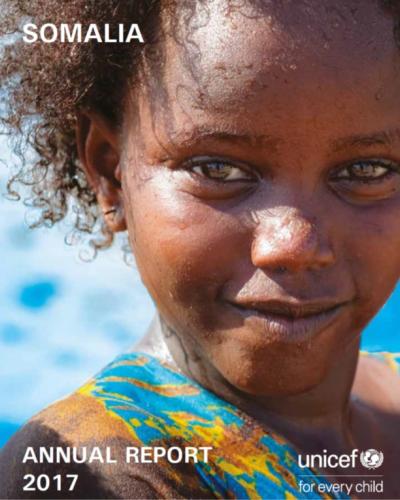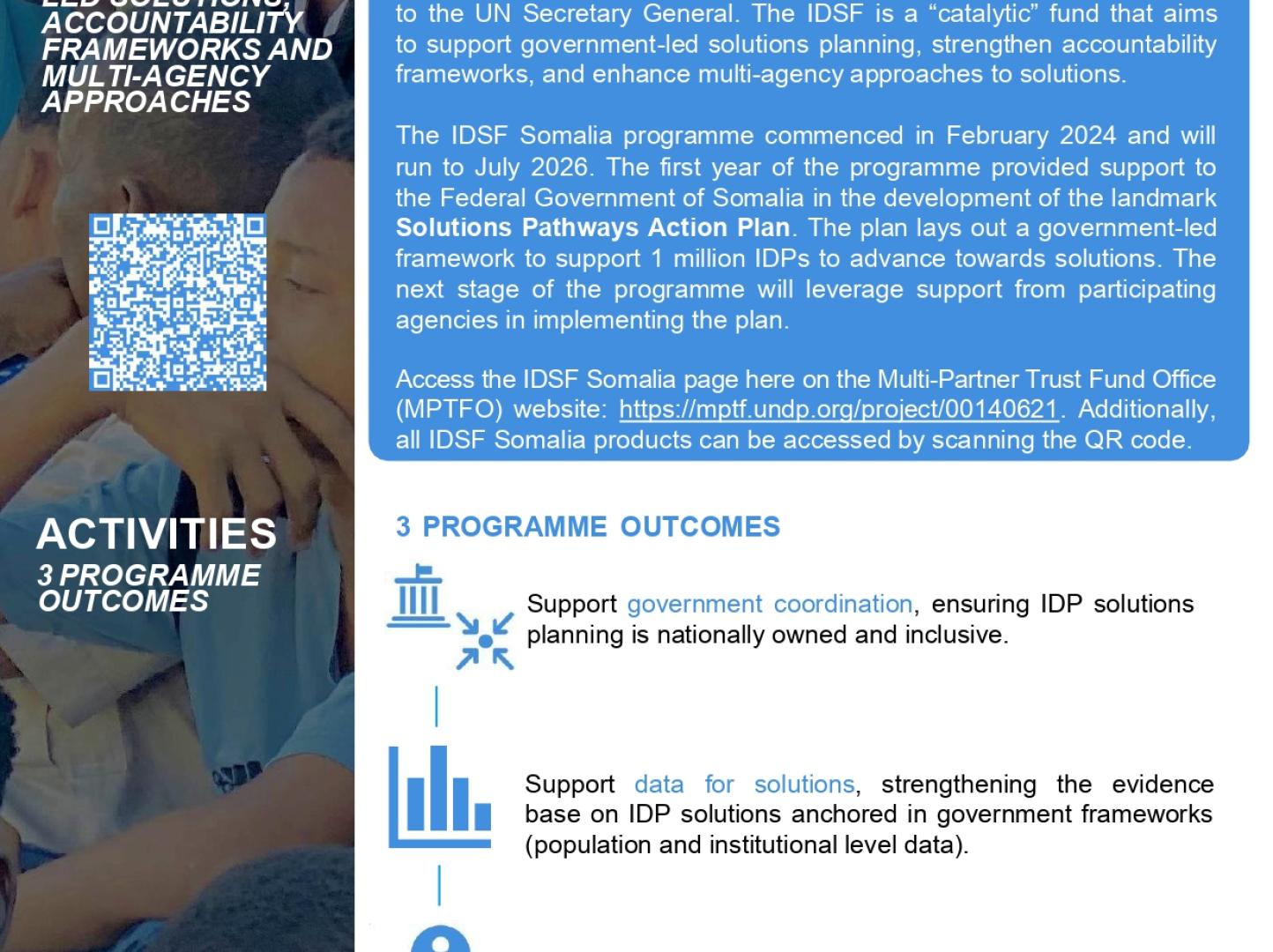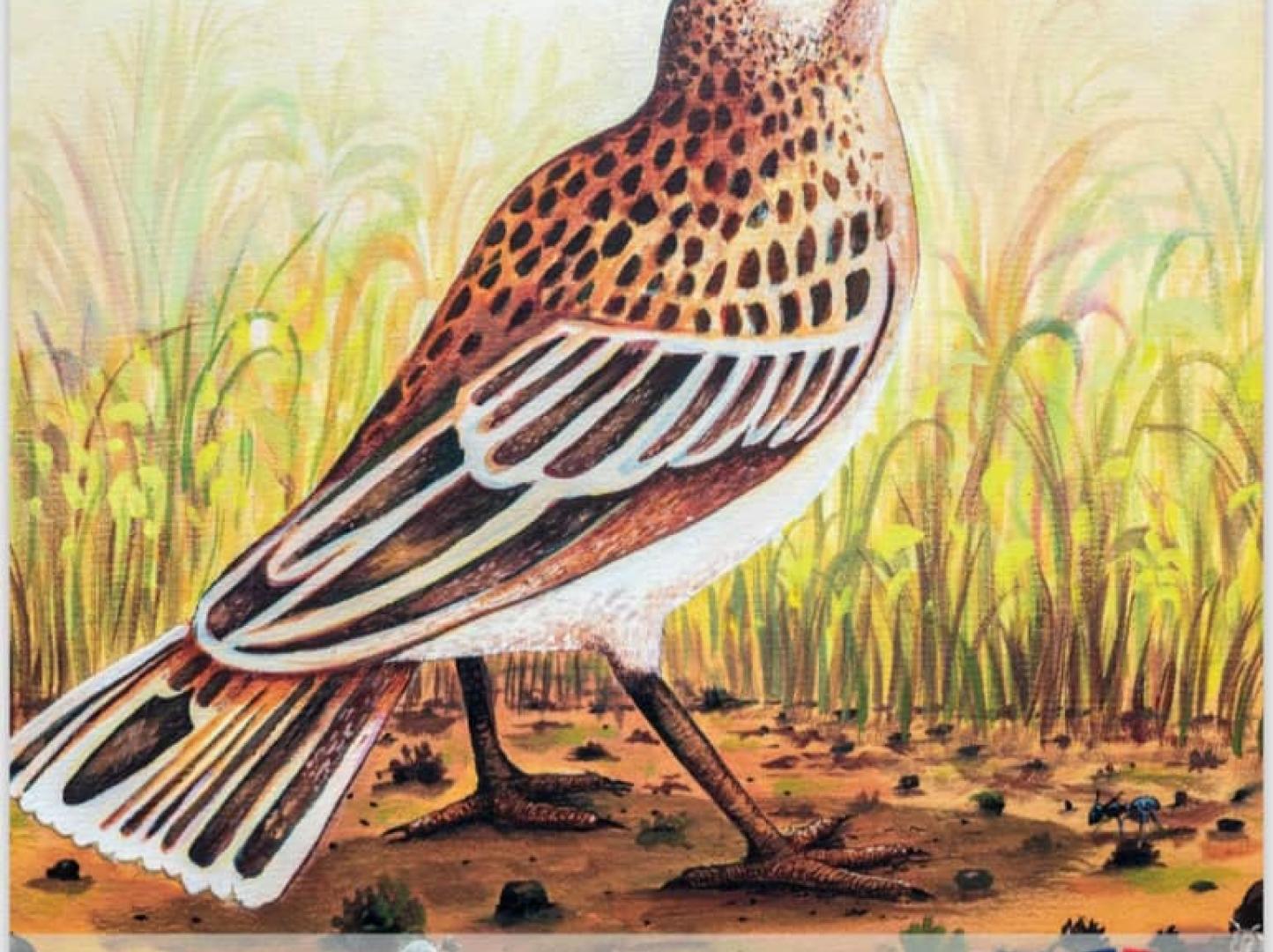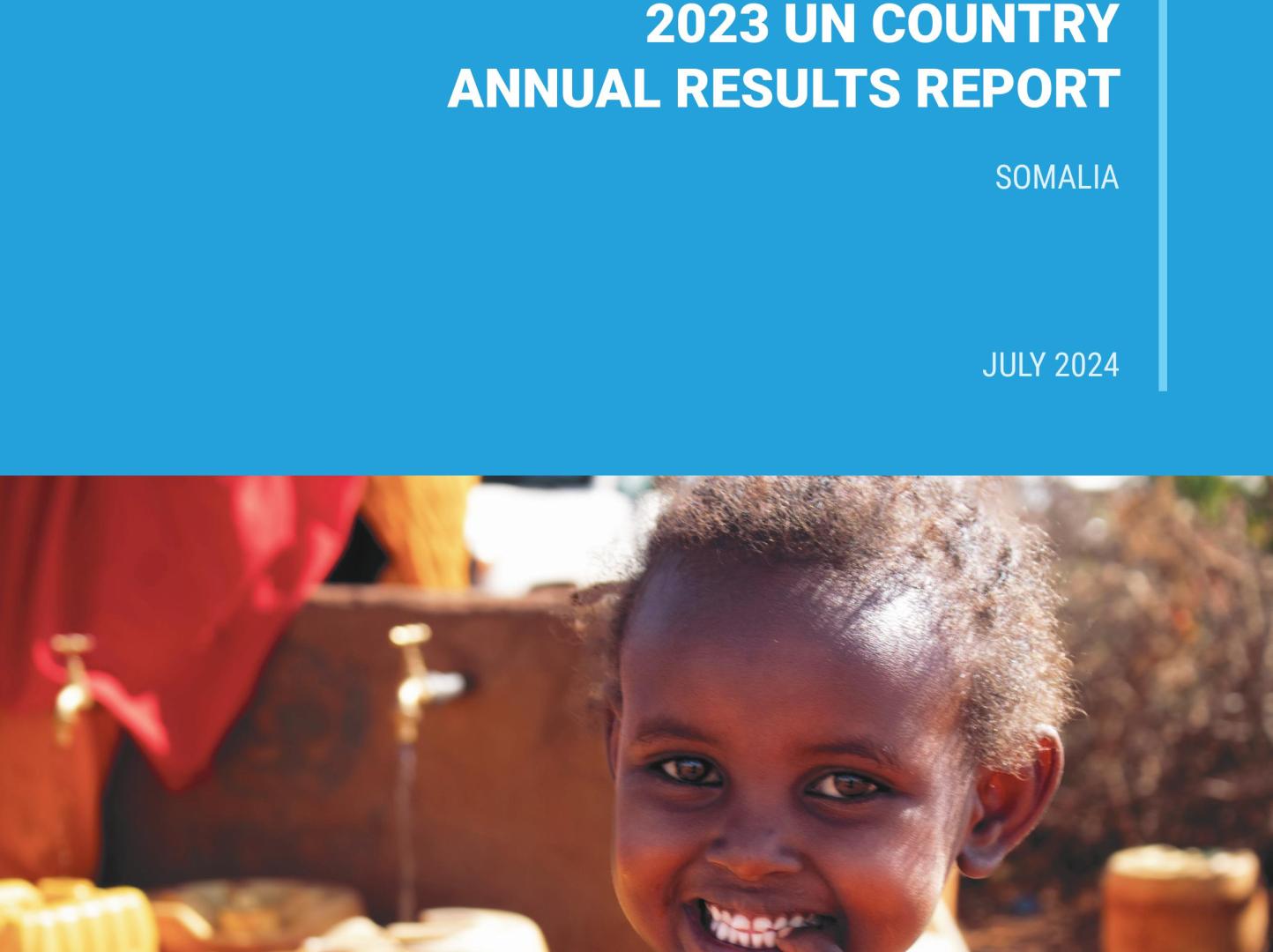UNICEF Somalia Annual Report 2017

The devastating 2017 drought was felt throughout Somalia, and UNICEF scaled up its operations to mitigate the worst effects. As both the Gu (April/May) and the Deyr (November/December) rains failed, we saw animals die, crops fail and a huge exodus of people from their homes to makeshift camps in desperate search of assistance.
The drought led to a major outbreak of acute watery diarrhoea/cholera, while measles cases soared in the overcrowded camps. Children already weak from hunger succumbed to sickness and over a million became malnourished.
And yet, despite the desperate situation and dire predictions, a famine was averted. The federal government and member states took the lead in coordinating the response and working closely with us. Donors stepped up quickly with substantial funding, and the aid community moved fast, with UN agencies such as UNICEF and WFP working closely together.
At UNICEF, thanks to unprecedented levels of funding from our donors, including UNICEF National Committees, we scaled up operations early in the year across all sectors. By the end of 2017 we had treated 270,000 children suffering from life-threatening malnutrition, provided 1.3 million people with emergency health services, 1.8 million with safe water and nearly 19,000 families with monthly cash transfers. Thousands of children affected by the drought were given an education, many for the first time, and we provided critical support for children who had been separated from their families, subject
to violence or who had previously been with armed groups.
Unfortunately, the drought continues and the authorities, UNICEF and its partners are maintaining the emergency response at the same level to ensure that the Somali people are fully supported and progress is not lost.
The report contains the following:
- Foreword by the UNICEF Somalia Representative
- Emergency response
- Health
- Nutrition
- Water, Sanitation and Hygiene (WASH)
- Education
- Child Protection
- Cross Sectoral










